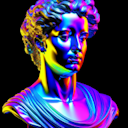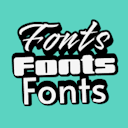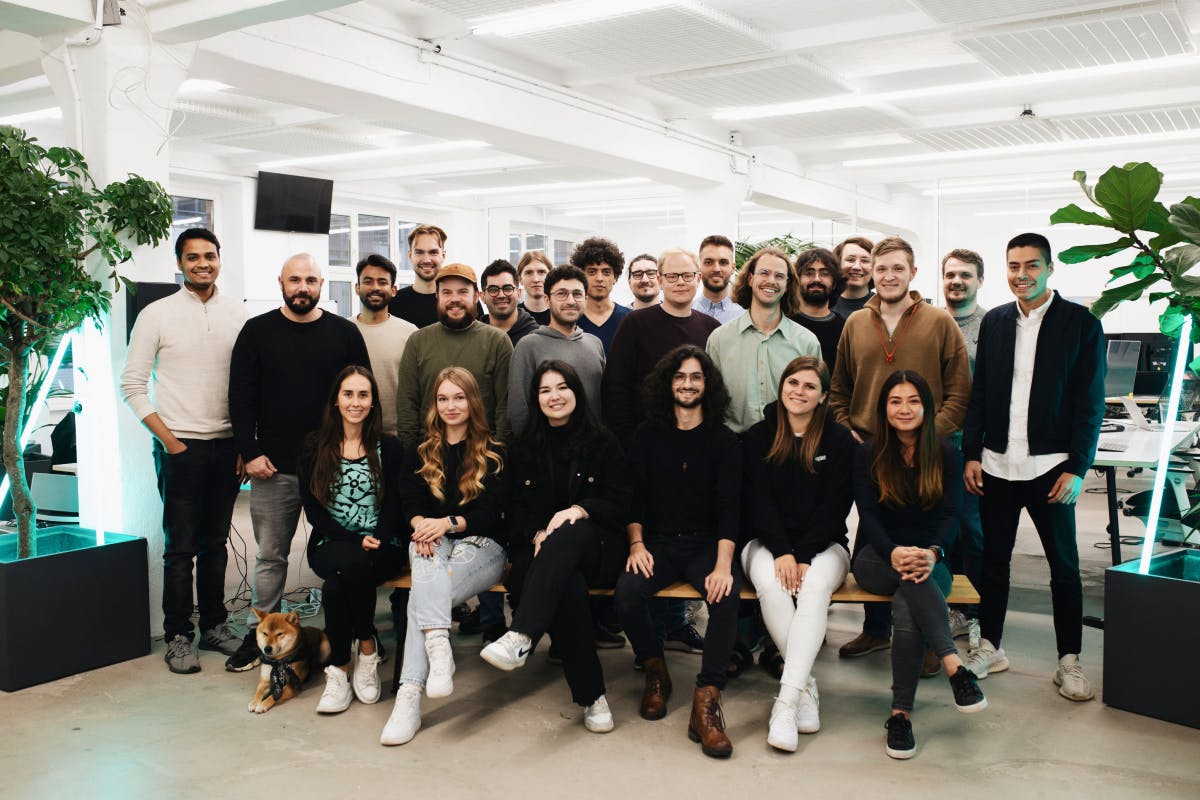Product
Templates
Resources
Company
Home
Blog
News
Jaguar rebranding: “Exuberant Modernism” and new logo strategy
Jaguar rebranding: “Exuberant Modernism” and new logo strategy

Jaguar rebranding colorful media concept with an orange background and a model in a red dress
In a scathing internal letter, Jaguar rebranding triggers 30 Jaguar designers to raise their concerns about the brand’s new logo, claiming it “disconnects from the narrative” and “feels too rounded and playful” for a brand that sells luxury cars.
They also pointed out that it looks too similar to other brands, contradicting Jaguar’s own “Copy Nothing” philosophy.
Then came the public reaction. Among the loudest critics? Elon Musk. When Jaguar dropped a rebranding campaign without featuring a single car, Musk fired off a simple but effective tweet:

Elon Musk's tweet on Jaguar rebranding
So what’s really going on? Jaguar’s rebranding isn’t just about a new logo—it’s a bold shift toward luxury and modernism, aiming to redefine the brand for a new generation.
But is this transformation a brilliant reinvention, or a design misstep?
In this deep dive, we’ll explore (table of content):
- The vision behind Jaguar’s rebranding
- How Exuberant Modernism is shaping the brand’s identity
- The backlash—from internal critiques to public skepticism
- What graphic designers can take away from this major brand shift
Let’s break it all down.
Table of contents
- Why is Jaguar rebranding?
- The business strategy behind the rebranding
- What is Exuberant Modernism? Changes and the design philosophy behind Jaguar rebranding logo
- The backlash: Why some critics aren’t sold on Jaguar rebranding logo and how it is promoted
- What designers can learn from Jaguar’s rebrand?
Why is Jaguar rebranding?
To answer your question, Jaguar is in the middle of a huge transformation, and not just with a new logo. The brand is going all-electric and completely redefining itself as a high-end, modern luxury brand.
But here’s the thing—people liked the old Jaguar. The sleek, powerful cars, the aggressive typography, and even the dark, neon-lit branding on their website screamed luxury. The old Jaguar made the users feel a premium, mysterious, and exclusive aura.

Jaguar's marketing on its website where the branding are dominated with neon and monochromatic colors
Now? It seems like Jaguar is actively leaving behind its original customer base. The new branding is brighter, softer, and, honestly, a little more generic.
Kittl tip: Looking for the older Jaguar typeface feel? Try Optima (Sans-serif) instead.
So, what’s the business strategy behind this?
Jaguar isn’t just refreshing its logo—it’s starting over, shifting to an all-electric lineup and a bold new identity. In a market dominated by Tesla, Porsche, and Mercedes, it’s a risky move.
As designers, we focus on visuals, but understanding the business strategy gives us insight into why the design choices were made in the first place.
Jaguar is banking on three key strategies to justify this rebrand:
1. Appealing to a new demographic

An opinion on Reddit that emphasizes the rebrand is not for appealing Jaguar's legacy buyers, but to attract new demographics
Apparently, Jaguar wants a younger, more diverse audience. Which, honestly, raises the question: were sales that bad that they needed to find new customers instead of keeping the ones they had? A Reddit comment with an insider perspective seemed to think so—and the numbers back it up.
Jaguar hit its peak U.S. sales in 2017 with nearly 40,000 vehicles sold, largely driven by the popularity of the E-Pace, F-Pace, and I-Pace SUVs. But since then? Sales have been in steady decline, dropping 15% in 2021 alone according to Good Car Bad Car. With luxury SUVs dominating the market and Jaguar’s lineup falling behind competitors, it’s not surprising they’re going all-in on reinvention.
2. Sustainability commitment
According to an IEA report, by 2035, well-to-tank emissions from EVs will drop 55-75%. Not surprising to see that with the new rebranding, Jaguar’s entire lineup is going fully electric by 2025.
The rebranding move is an act to future-proof itself in a market where combustion engines are on their way out. This positions Jaguar alongside the luxury EV push happening across the industry, catering to buyers who value high-end, environmentally friendly cars.
3. Market differentiation – the real reason behind Jaguar’s design overhaul
They’re pushing their "Copy Nothing" philosophy to break away from conventional automotive design. That’s why the new branding feels so different—it’s an intentional statement.
But for a brand shifting into a luxury electric vehicle feel, the choice of typography is unusual. Luxury brands typically favor fonts like Serifs or Sans-Serifs (like the modified Optima in their old typeface), which exude prestige and craftsmanship.
Meanwhile, the new font feels more suited for a clothing boutique, a mom-and-baby store, or even a frozen yogurt store.
Exuberant Modernism: The design philosophy behind Jaguar rebranding logo
Jaguar’s rebrand isn’t just about a new logo—it’s a complete shift in creative philosophy.
At the heart of this transformation is Exuberant Modernism. But what does that actually mean for the brand’s typography, color choices, and visual identity?
What is Exuberant Modernism?
Jaguar describes Exuberant Modernism as a fusion of modernist design principles with energy, expression, and boldness. Unlike classic modernism, which prioritizes simplicity and function, this version injects personality and vibrancy into minimalism.
Think Bauhaus meets luxury fashion—where clean lines, geometric shapes, and stripped-down elements are balanced with confident, artistic details.
Typography: Breaking the rules of traditional luxury

Jaguar's new typeface. A mix of upper and lowercase letters, screenshot taken from Jaguar's "Copy Nothing" promotional video
Another shock factor is the new wordmark. It’s a mix of uppercase and lowercase letters ("JaGUar") and is nothing like what we usually see in old-world luxury branding.
Most high-end brands stick to classic, refined typefaces like Didot (Armani), Bodoni (Valentino), or Garamond (Rolex)—all designed to exude heritage and exclusivity.
Jaguar, on the other hand, picked something soft, geometric, and more fashion boutique than high-performance luxury.
But this is what Exuberant Modernism is. By intentionally breaking conventions, Jaguar is making a clear statement: "We’re not just another luxury car brand. We’re something different."
As for text effects: Luxury brands often use subtle text effects to add depth while maintaining a clean, refined look.
Whether it’s engraved lettering, embossed details, or finely layered typography, these elements evoke a sense of heritage and craftsmanship that has stood the test of time. These text treatments are a hallmark of old-world luxury, reinforcing a brand’s legacy through subtle depth, refined ornamentation, and a quiet confidence that doesn’t need to shout to be noticed.
However we may feel about their typeface choice, we can agree that the text readability from the flatter and fashion-inspired text effect in their promotional materials is on point.
Kittl tip: Looking for a less modular font that combines uppercase and lowercase letters that maintain proportional balance? Try Charoe (Sans-serif) in the Kittl Editor.
The strikethrough: A statement or a trend?
One of the most talked-about elements of this rebrand is the horizontal strikethrough that appears in the logo on the device marks of the new Jaguar Type 00 vehicle. Visually, it works.
In terms of Exuberant Modernism, the strikethrough makes sense—it’s a disruptive, energetic detail that adds a layer of visual intrigue. It’s supposed to symbolize “striking through imitation”—a direct nod to their Copy Nothing philosophy.
Color theory: From monochrome to primary colors

A screenshot from "Copy Nothing" campaign video - showing a colorful campaign, leaving behind its' monochrome-dominated color scheme of its past branding
Another major shift? Color. Jaguar’s previous branding was all about sophisticated monochromes—deep blacks, rich silvers, and metallic tones that reinforced its image of understated luxury.
Now, they’ve introduced a vibrant palette of primary colors in their marketing promotions—red, blue, and yellow—while their cars now come in striking shades like "Miami Pink" and "London Blue." This shift isn’t just about aesthetics; color psychology plays a huge role in how brands communicate identity and emotion.
Understanding color theory is key in creating a brand presence that resonates with the right audience. By embracing a brighter, more playful palette, Jaguar is welcoming something more contemporary and expressive.
The backlash: Why some critics aren’t sold on Jaguar rebranding logo and how it is promoted

A Redditor's comment about the Jaguar rebranding. They think that the new advert, logo, and brand typeface feels "tacky, generic, and uninspired"
Jaguar’s rebranding has set the internet on fire, and not in the way they probably hoped. Reddit and Twitter are filled with critiques from long-time fans who feel like the brand has lost touch with what made it special.
The biggest issue? Prestige.
One Redditor summed it up perfectly:
These days, people own a Jaguar because owning a Jaguar in itself feels nice… The new advert, logo, and brand typeface ruin this because… it feels tacky, generic, and uninspired.
”Jaguar used to carry a certain status. It wasn’t just about the car—it was about the brand’s exclusivity and legacy. But the new rebrand? It doesn’t hit the spot.
From a marketing and design perspective, the old Jaguar’s old branding had a clear identity—timeless and sophisticated, with a presence that stood apart.
The new branding, on the other hand, blends in more than it stands out. It leans into a modernist, fashion-forward aesthetic, and feeling of “forced inclusion” but at the cost of losing the character that made Jaguar feel distinct.
Then there’s the execution of the campaign. One of the biggest complaints online? Jaguar didn’t actually show the car in their rebrand announcement. For a car company, that’s a big deal.
If Apple announces a new iPhone, they show the iPhone. If McDonald’s does a rebrand, they still show the food.
But Jaguar? They gave us a high-fashion concept film that made the brand look more like a lifestyle label than an automaker.
On the other side of the coin, this was never meant to be about the cars.
Some defenders of the rebrand point out that this was a brand identity refresh, not a product launch. Jaguar isn’t selling a single car with this campaign—they’re selling the idea of what Jaguar is becoming.
They’re trying to reposition themselves for a younger, wealthier audience, moving away from the “old man’s luxury car” stereotype–all to get into a new market.
We have to agree, that even their cars come in brighter, more modern color palettes. These cars would not fit the “serious typeface with monochrome color” marketing.
And to be fair, this kind of approach isn’t uncommon in high-end branding. Plenty of luxury brands use abstract, high-fashion storytelling to sell an idea rather than a product.
What designers can learn from Jaguar’s rebrand

The new Jaguar concept car that is targetted to attract younger demographics that's dominated by London Blue color and Miami Pink.
- Luxury is evolving. Jaguar is betting that modern luxury doesn’t have to look like old luxury. But the challenge is ensuring that the new look still carries the weight of exclusivity.
- Typography and composition matters. The wrong font choice can make or break how a brand is perceived. Would this logo feel more premium with a typeface closer to an Old Benchville Americana-Retro font or Louis Vuitton’s Futura? Maybe. But the real magic happens in the balance—pairing a heritage-inspired typeface with modern colors or a minimalist can work. A well-executed combination can bridge the gap between tradition and modernity, making a brand feel established yet relevant.
- Bold branding is risky—but memorable. The strikethrough, the typography, and the color palette make this rebrand instantly recognizable. Whether it’s for the right reasons? That’s still up for debate.
- Know your audience (both old and new). If you're going to shake things up, at least make sure it’s for the right people. Drastic changes can alienate loyal customers, and if the new audience doesn’t care enough to replace them, you’ve got a problem.
- Respect the past while pushing forward. If you are looking to do a rebrand that modernizes, it’s important to keep the history. Change is necessary, but when you throw out too much of what made you iconic, you risk losing the emotional connection that made people care in the first place.
A bold Jaguar rebrand or a design disaster?
Jaguar’s Exuberant Modernism approach is nothing if not ambitious. They’ve thrown out their classic, refined aesthetic in favor of a modern, geometric, fashion-inspired identity, aiming to separate themselves from traditional luxury automakers.
And in a way, it worked—the rebrand has everyone talking.
Whether that’s good PR or just noise depends on who you ask. Jaguar’s Managing Director, Rawdon Glover, seems to think controversy is part of the plan, openly admitting that Jaguar needs to act differently to avoid getting "drowned out" in the luxury car space.
Rebrands are risky, and Jaguar has made a massive bet on this one. Now, it’s a waiting game to see if their new identity will truly resonate—or if this will be just another polarizing refresh that fades into the noise.
Like Jaguar, if you’re looking to rebrand and want some typeface that balances modernity with timeless appeal, check out Kittl’s typeface library, including its collaboration with Monotype—a collection designed to blend innovation with strong brand identity.
Related articles

Tutorials
Warm and cool colors: A designer’s guide to color temperature
Have you ever felt the difference in mood between a room painted in blues or purples versus one in y...

Tutorials
How to build a personal brand: 20 tips for designers and creators
For designers and creators, building a strong personal brand isn’t just about standing out – it’s a ...

Design
Vision Board Templates for Every Goal
Thousands of people search for vision board templates every year, with the highest spikes every Janu...















